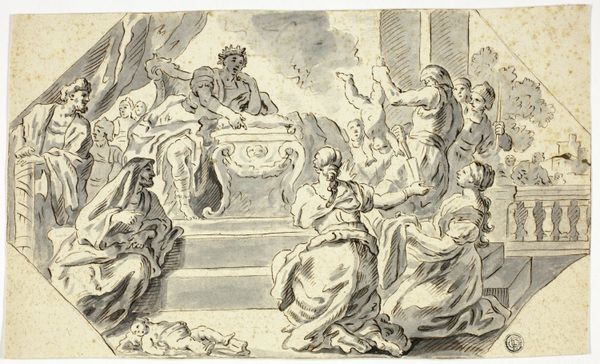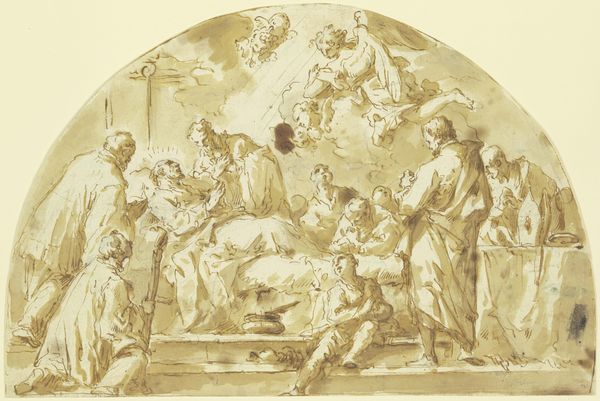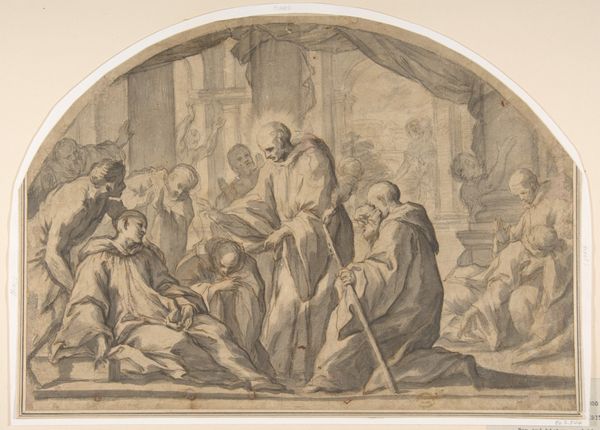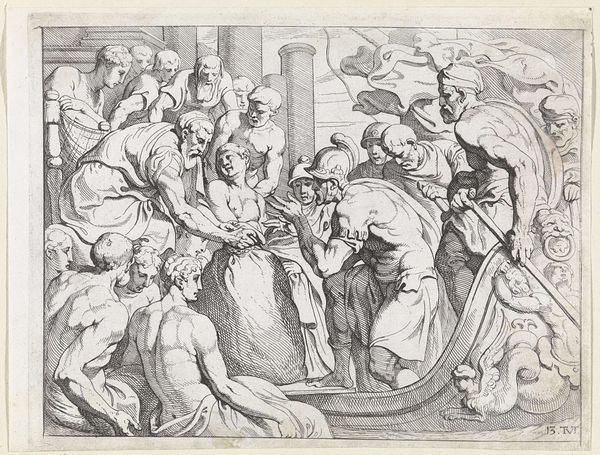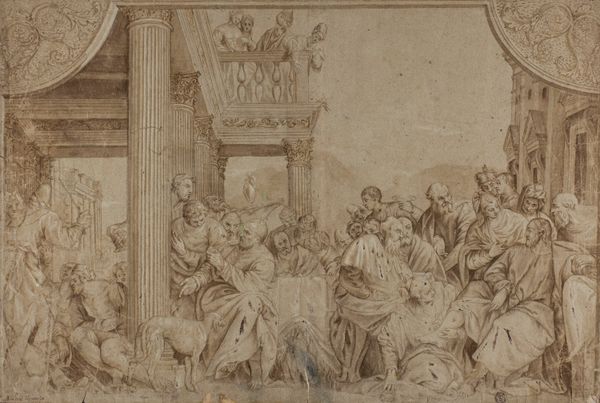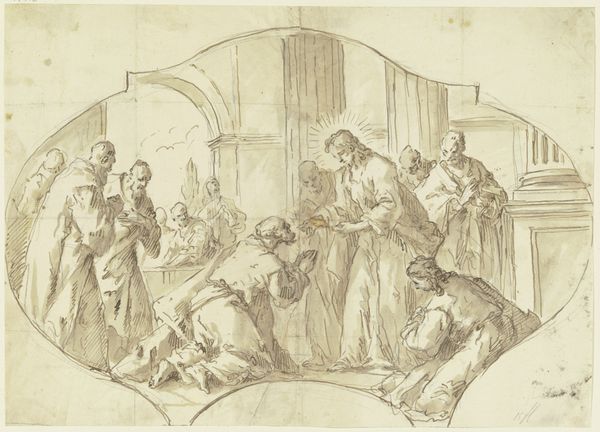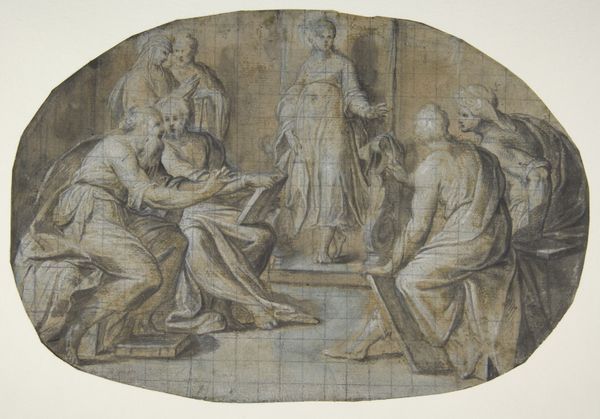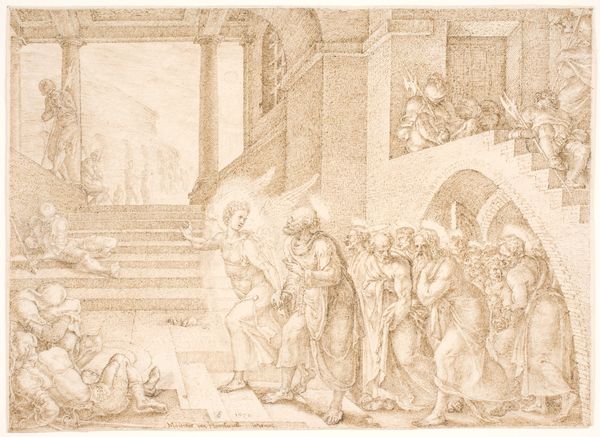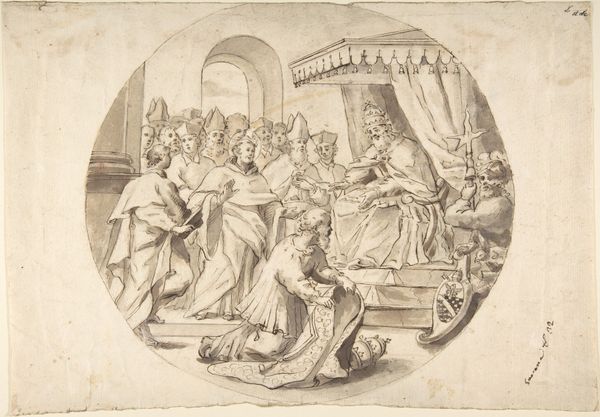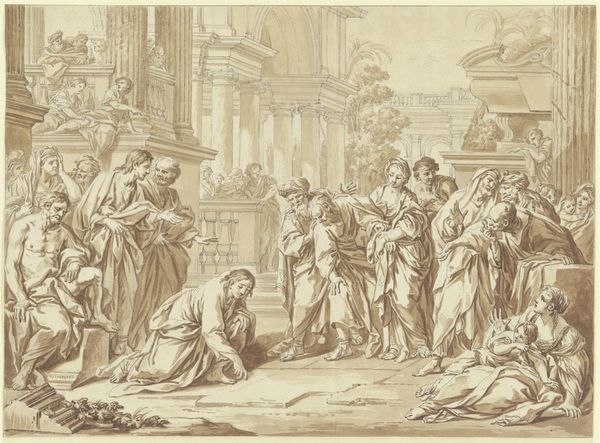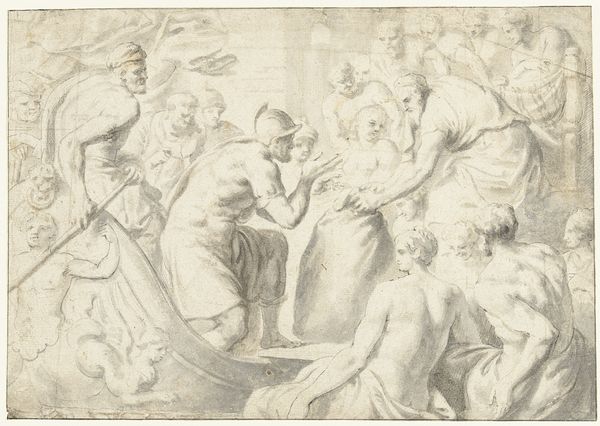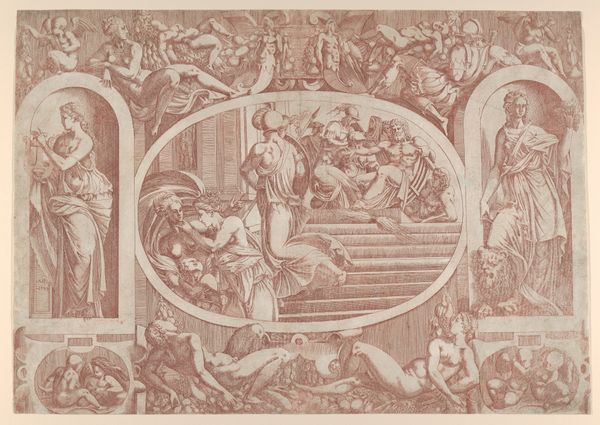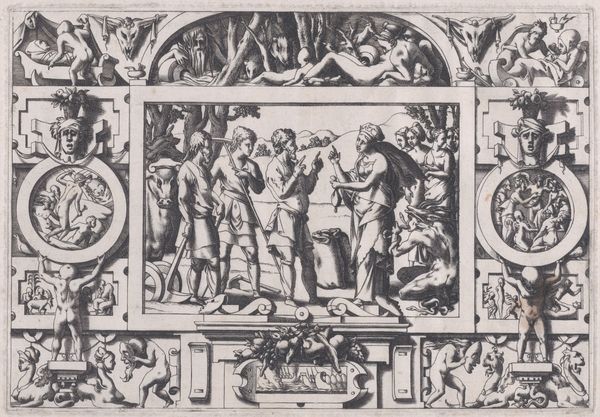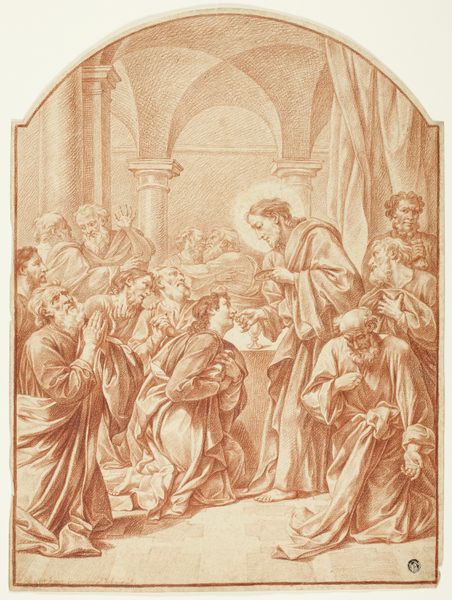
drawing, paper
#
drawing
#
figuration
#
paper
#
11_renaissance
#
pencil drawing
#
history-painting
Dimensions: overall (approximate): 22.3 x 36.6 cm (8 3/4 x 14 7/16 in.)
Copyright: National Gallery of Art: CC0 1.0
Johann Matthias Kager rendered this drawing of the Death of the Virgin in pen and brown ink with gray wash sometime between the late 16th and early 17th century. Kager lived and worked in Munich, Germany. In this delicate sketch, we see Mary surrounded by the apostles at her deathbed, a common subject in the art of the time, yet what is less common is the grid that lies beneath the composition, indicating that this artwork was a preparatory study for a larger piece. Kager lived during the Counter-Reformation, a period in which the Catholic Church sought to reassert its authority through art that would inspire religious devotion. Images of Mary, like this one, were used to emphasize her purity, piety, and her role as intercessor. Here, Kager does not challenge conventional depictions of religious scenes. The setting is idealized, and Mary is presented as a figure of grace, surrounded by devoted followers. The somber mood evokes a sense of reverence, which invites the viewer to reflect on themes of mortality, faith, and salvation.
Comments
No comments
Be the first to comment and join the conversation on the ultimate creative platform.
